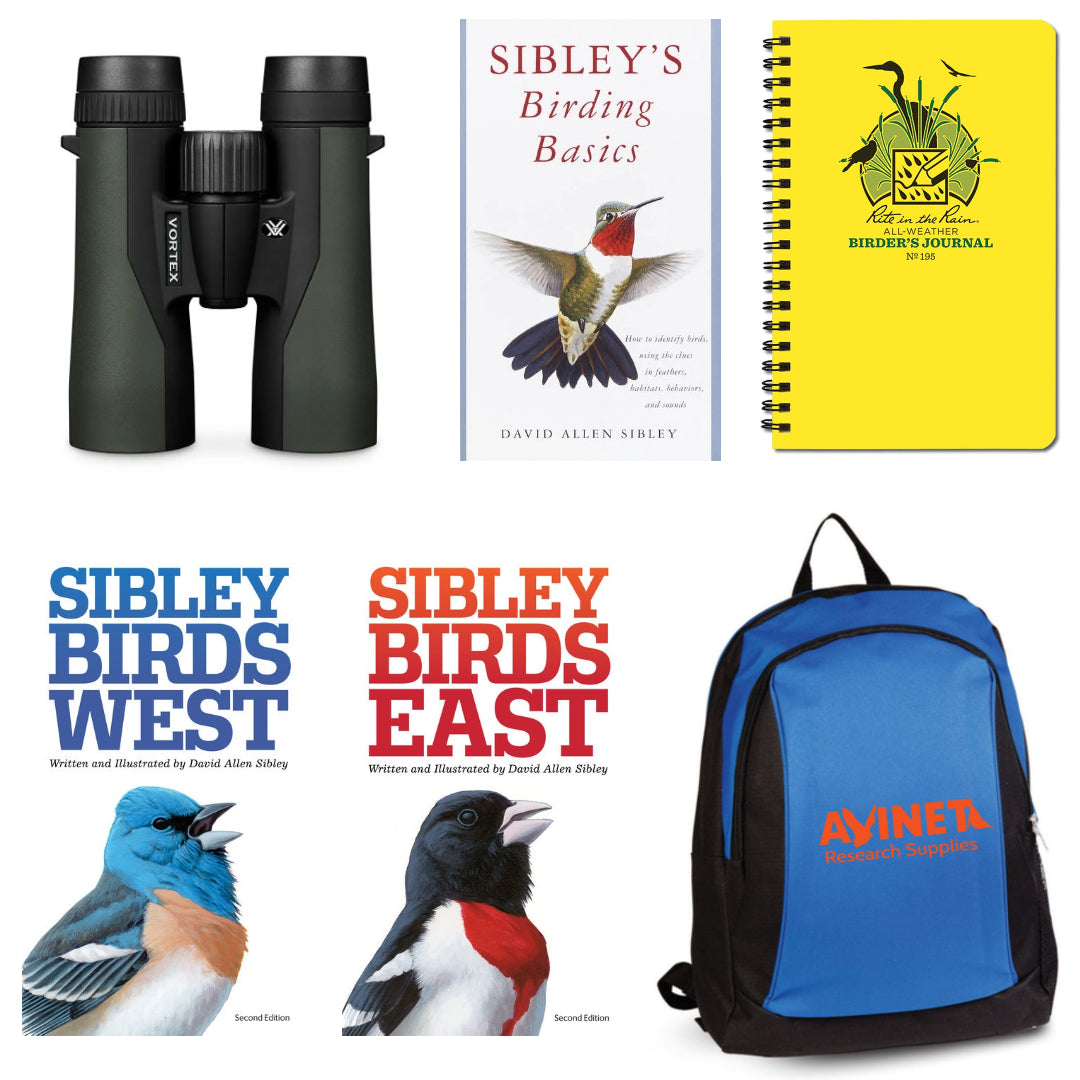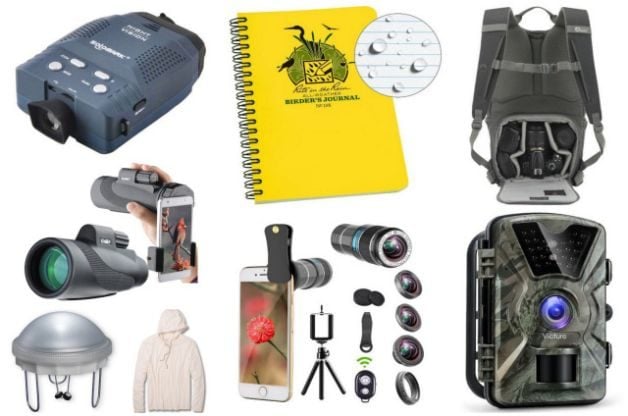Have you ever stood quietly in nature, waiting to catch a glimpse of a beautiful bird flying overhead or perching nearby? The thrill of bird watching can be an incredible experience, offering you a chance to connect with nature and observe wildlife in a peaceful setting. But are you equipped with the right tools to make the most out of your bird watching outings?

This image is property of www.avinet.com.
Understanding Bird Watching
Bird watching, or birding, is more than just spotting birds; it’s about appreciating their behaviors, songs, and habitats. It can become your favorite outdoor pastime, whether you’re venturing into a national park, your backyard, or simply walking around your neighborhood. Understanding the necessary items for your bird watching kit can enhance this experience, making it easier to identify species and enjoy the moments that nature offers.
The Importance of a Well-Stocked Kit
Having an adequate bird watching kit is essential for a successful outing. With the right gear, you can observe birds more closely, document your findings, and feel more comfortable while immersed in nature. Each item serves a purpose, so knowing what to pack will prepare you for any situation when you’re out in the field.
Essential Items for Your Bird Watching Kit
Here’s a detailed look at the key items you’ll want to include in your bird watching kit, ensuring an enjoyable and fruitful experience.
1. Binoculars
Binoculars are arguably the most critical item in your bird watching kit. They allow you to observe birds from a distance without disturbing them. When selecting binoculars, consider the following features:
| Feature | Importance |
|---|---|
| Magnification | Higher magnification helps you see farther. Look for 8x to 10x magnification. |
| Objective Lens Size | A larger lens (e.g., 42mm) gathers more light for a clearer image, especially in low-light conditions. |
| Weight | Lightweight binoculars are easier to handle during long periods. |
| Field of View | A wider field of view enables easier tracking of moving birds. |
2. Field Guide
A good field guide can be your best companion in identifying bird species. These comprehensive books or apps contain photographs, descriptions, and information on bird calls. When choosing a field guide:
- Select one that covers the region you’ll be exploring.
- Look for guides that provide images of birds in various plumages, as they can differ by season and age.
- Consider getting a guide that includes information on behavior and habitat to enrich your knowledge.
3. Notebook and Pencil
Documenting your observations is a crucial part of bird watching. A simple notebook allows you to jot down notes about species you’ve seen, their behaviors, and your experiences. Include the following in your bird watching journal:
- Date and time of sightings
- Location details
- Weather conditions
- Notable behaviors or interactions
This record will help you track the species you encounter and improve your skills over time.
4. Comfortable Clothing
When you’re out bird watching, comfort is key. Opt for clothing that is appropriate for the weather and terrain. Here are a few tips:
- Layer Up: Opt for layers that you can remove or add as the temperature changes.
- Neutral Colors: Wear earthy tones to blend into your surroundings and avoid startling birds.
- Weather-Resistant Fabrics: If rain is in the forecast, consider a waterproof jacket.
5. Footwear
Footwear is an essential component of comfort and safety. Well-fitted shoes or boots provide support during long walks and protect your feet from uneven terrain. Here’s what to consider:
- Support: Choose shoes with good ankle support if you’ll be hiking.
- Traction: Look for soles that provide grip to navigate slippery or rugged paths.
- Comfort: Hiking shoes should fit well and allow for breathability.
6. Backpack
A suitable backpack is necessary for carrying your bird watching essentials. It should be roomy enough to fit all your gear without being cumbersome. When picking a backpack, consider:
- Size: Ensure it’s large enough to accommodate your items without being too heavy.
- Compartments: Multiple pockets will help keep your items organized.
- Comfort: Look for padded straps to avoid discomfort during long treks.
7. Water Bottle
Staying hydrated is vital, especially during long outings. Carry a refillable water bottle to keep your energy up. You may also want to include:
- Insulated Bottle: It can keep your drink cold or hot, depending on your preference.
- Cup Holder: Consider a bottle with a holder attachment for easy access.
8. Snacks
When you’re out enjoying nature, a good snack can boost your energy and enhance your experience. Opt for lightweight, nutritious options such as the following:
| Snack Option | Benefits |
|---|---|
| Protein Bars | They provide lasting energy. |
| Trail Mix | A mix of nuts, seeds, and dried fruit offers quick energy boosts. |
| Fresh Fruit | Healthy, hydrating, and easy to carry. |
9. Camera
Capturing stunning moments when you spot a rare bird can be incredibly fulfilling. If you enjoy photography, take a camera with you. You don’t need a high-end model; even a smartphone can work well for bird photography. Keep the following tips in mind:
- Zoom Lens: Opt for a camera with a good zoom capability to get close-up shots.
- Tripod or Stabilizer: For clearer, steadier shots, consider bringing a lightweight tripod.
10. Bird Calls App or Recorder
Getting the attention of birds can sometimes require a little help. Using a bird calls app or a recorder can attract birds closer to you. Here’s what to consider:
- User-Friendly App: Choose one that offers a wide selection of calls for the birds in your region.
- Volume Control: Make sure it has adjustable volume settings to avoid scaring away the birds.
11. First Aid Kit
You never know what might happen while you’re out in nature, so being prepared is always wise. Even a small first aid kit can come in handy. Some essential items to consider including are:
| Item | Purpose |
|---|---|
| Adhesive bandages | For small cuts and scrapes. |
| Antiseptic wipes | To clean wounds. |
| Pain relievers | For headaches or any discomfort. |
| Tweezers | Useful for removing splinters. |
12. Bug Spray and Sunscreen
Protecting yourself from insects and sun exposure is crucial during long outdoor excursions. Make sure to choose:
- Insect Repellent: A lightweight, effective bug spray can help deter mosquitoes and other pests.
- Sunscreen: A broad-spectrum sunscreen is necessary for protecting your skin from harmful UV rays.
13. Map and Compass or GPS
Even if you think you know the area well, having a map and compass or GPS can enhance your safety and ease while bird watching. Whether you’re heading into dense woods or open fields, navigation tools can help you stay oriented. Here’s what to look for:
- Detailed Maps: Use topographical maps if you’ll be in unfamiliar terrain.
- GPS Device or Smartphone: Ensure you have a charged device with offline maps in case you lose signal.
14. Notebook and Writing Utensils
Another great way to document your adventures is by maintaining a notebook. Take notes on the birds you see and their behaviors. It can serve as a personal log of your bird-watching experiences. Make sure to have:
- Durable Notebook: Choose one that can withstand the elements.
- Weatherproof Pens: If it rains, you’ll still be able to write without worry.

This image is property of i0.wp.com.
Optional Items to Consider
While the items above are essential for your bird watching kit, there are additional accessories that can enrich your experience. Depending on your style and preference, consider packing some of the following items.
1. Folding Chair
If you plan to sit and wait for birds to come into view, a lightweight, foldable chair can be a great addition. It allows you to rest comfortably and observe without straining your back. Look for one that is portable and easy to carry.
2. Bird Feeder
If you’re bird watching in your backyard or garden, a feeder can attract different species to your area. Invest in feeders that cater to various types of birds. Just be sure to observe them from a distance to avoid disturbing their feeding.
3. Spotting Scope
For those serious about bird watching and wanting to see distant birds in greater detail, a spotting scope can be invaluable. They typically have higher magnification than binoculars, allowing you to see birds that are far away.
4. Wildlife Guidebooks
In addition to bird guides, consider carrying guidebooks on local flora and fauna. Understanding the ecosystem can help you better appreciate the birds you’re observing and their interconnections with other species.
5. Personal Items
Don’t forget your personal items, such as identification, a wallet, or your mobile phone. It’s always good to have access to your contacts in case of emergencies.
Packing Your Kit
Packing your bird watching kit efficiently ensures that you have everything you need while keeping your gear organized. Here are some tips for effective packing:
- Layered Packing: Place heavier items at the bottom of your backpack for better stability.
- Accessibility: Keep frequently used items, such as binoculars and notebooks, in easily accessible pockets.
- Weatherproofing: Use waterproof bags for items that may be damaged by rain, such as maps and notebooks.

This image is property of www.birdsandblooms.com.
Enjoying Your Bird Watching Experience
Once you have your essentials and optional items ready, set out for your bird watching adventure! Remember that patience is key; the best sightings often require time. Here are some additional tips to enhance your experience:
1. Go at the Right Time
Bird activity can vary throughout the day, with many species being more active in the early morning and late afternoon. Plan your outings to take advantage of peak activity times.
2. Choose the Right Locations
Researching the best birding locations can significantly improve your chances of spotting different species. Local parks, nature reserves, or wetlands are often great places to start.
3. Keep Quiet and Still
Birds are easily startled, so being quiet and still is essential while you’re waiting to see them. Instead of sudden movements, take slow, careful actions.
4. Join Local Bird Watching Groups
Consider joining local bird watching clubs or groups. Not only can you learn from experienced birders, but it’s also an excellent way to meet new friends who share your passion.
5. Share Your Experiences
Once you get home, take some time to share what you saw with family or friends. You can also join online communities where bird watchers share their experiences and findings. Engaging with others can deepen your love for bird watching.
Conclusion
Building a well-rounded bird watching kit ensures that you’re prepared for exciting outings. With essential items by your side, you can maximize your enjoyment of the great outdoors while learning about the incredible avian species that share our world.
Make your adventures meaningful by connecting with nature and enriching your knowledge of bird behavior and habitats. Whether you’re a beginner or a seasoned watcher, the right gear will enhance every moment you spend observing the beauty of nature and its feathered inhabitants.
So, what are you waiting for? Get your bird watching kit ready and step into a world filled with incredible sights, sounds, and experiences!

This image is property of Amazon.com.

